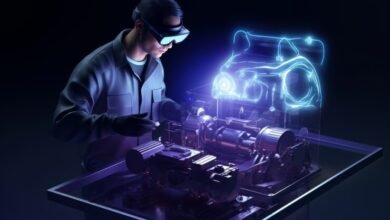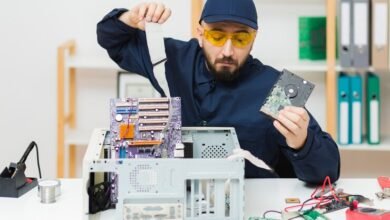Unraveling the Mysteries of HP CNXHDD Cables and Their Fixes

nals, and eIn today’s technology-driven world, HP laptops are a staple for many tech enthusiasts, professioveryday users. However, like any piece of hardware, they occasionally face issues—particularly with the HP CNXHDD cables. These cables, essential for your laptop’s functionality, can become problematic over time. Understanding these issues is crucial not just for maintaining performance but also for extending the lifespan of your device.
This blog post will walk you through the common problems associated with HP CNXHDD cables, how to diagnose these issues, and provide practical solutions that can save you time and money. Whether you’re a tech enthusiast looking to expand your knowledge, an IT professional troubleshooting issues, or an HP laptop user seeking to maintain your device, this guide is tailored for you.
Understanding the HP CNXHDD Cable
The HP CNXHDD cable might sound complex, but at its core, it serves a straightforward purpose. It connects the hard drive to the motherboard, facilitating data transfer between these critical components. This cable is vital for your laptop’s storage operations, making its reliability paramount.
HP has various models of CNXHDD cables, each designed to fit specific laptop models. Knowing which model you have is essential for compatibility purposes if you ever need a replacement. Compatibility ensures that the cable functions correctly without causing any further issues.
Over time, even such a robust piece of technology can encounter problems. Understanding the role of the HP CNXHDD cable helps frame why it may experience wear or faults and underscores its crucial function in maintaining your laptop’s performance.
Common Problems with HP CNXHDD Cables
Despite their importance, HP CNXHDD cables are not immune to issues. One frequent problem is cable fraying, which often results from constant bending or mishandling. A frayed cable can lead to intermittent connectivity, causing disruptions in data transfer and affecting overall laptop performance.
Connectivity problems are another common issue. These can manifest as random disconnections or failures to recognize the hard drive, leading to system errors or boot issues. Often, these problems stem from loose connections or internal damage to the cable.
Performance degradation is also a concern. Over time, cables can lose efficiency, leading to slower data transfer rates. This problem is particularly noticeable when handling large files or running intensive applications, resulting in a sluggish system response.
How to Diagnose HP CNXHDD Cable Problems
Diagnosing cable issues can seem daunting, but a systematic approach makes it manageable. Start by observing any signs of physical wear, such as fraying or loose connectors. These visual checks can often reveal underlying problems that may need addressing.
For a deeper analysis, consider using diagnostic software tools designed for hard drive and cable testing. Tools like HD Tune or CrystalDiskInfo provide insights into your cable’s health and performance, helping determine if it’s the likely culprit behind your laptop’s issues.
If you notice symptoms like random disconnections or system errors, test the cable by connecting it to another device if possible. This step helps isolate whether the issue lies with the cable itself or another component of the laptop.
Solutions for HP CNXHDD Cable Issues
Once you’ve diagnosed the problem, it’s time to explore solutions. For frayed cables, replacing the cable is often the best course of action. Ensure you purchase the correct model compatible with your laptop to avoid further complications.
For DIY enthusiasts, temporary solutions like electrical tape can offer a short-term fix for minor physical damage. However, this should only be a stopgap until a proper replacement is obtained to ensure long-term reliability.
If you’re unsure about purchasing a replacement, HP’s official website or authorized retailers offer certified replacements. These ensure compatibility and quality, providing peace of mind that your new cable will function as required.
Preventing Future HP CNXHDD Cable Problems
Prevention is often better than cure, and this holds true for cable maintenance. Handling the HP CNXHDD cable gently and avoiding unnecessary bending or twisting can significantly extend its lifespan. Proper storage, such as coiling the cable loosely, also helps prevent fraying.
Regular inspections for signs of wear can catch potential problems early. By addressing these issues promptly, you can prevent small problems from escalating into major disruptions.
Using protective measures, like cable sleeves or clips, helps minimize wear and tear from everyday use. These simple tools keep the cable secure and reduce the risk of damage caused by accidental tugs or pulls.
Conclusion
Understanding and addressing HP CNXHDD cable issues is essential for maintaining your laptop’s performance. By familiarizing yourself with common problems and implementing preventive measures, you can ensure your device runs smoothly for years to come.
We invite you to share your experiences and advice on managing HP CNXHDD cable issues in the comments below. Engaging with a community of tech enthusiasts and professionals enhances our collective knowledge and helps everyone achieve better results.
For those eager to learn more about HP laptop maintenance and troubleshooting, we offer additional resources and guides. Explore these materials to continue your educational journey and master the art of laptop care.



